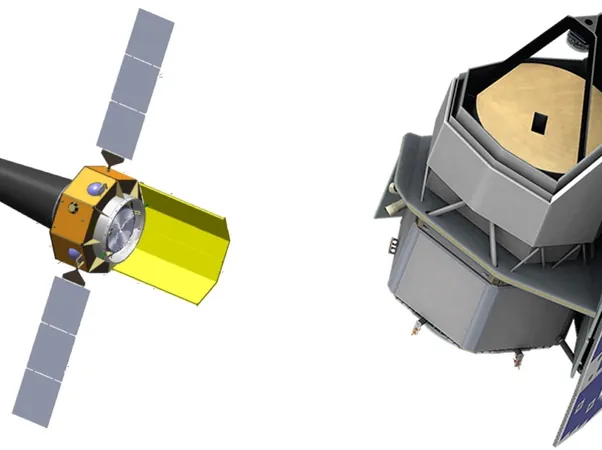
NASA Takes a Bold Step Forward: New X-ray and Far-Infrared Space Telescopes on the Horizon!
2024-10-04
NASA Takes a Bold Step Forward: New X-ray and Far-Infrared Space Telescopes on the Horizon!
In a thrilling announcement made on October 3rd, NASA has chosen two ambitious proposals for X-ray and far-infrared space telescopes, setting the stage for groundbreaking advancements in astrophysics. Dubbed the Probe Explorers program, these innovative concepts will each receive $5 million for in-depth studies over the next year, with the aim of enhancing their designs and functionalities.
Selected Missions
Among the selected missions is the Advanced X-ray Imaging Satellite, or AXIS, which boasts a wide field of view and exceptional spatial resolution. This observatory will delve into a variety of critical astrophysical questions, as outlined in the Astro2020 decadal survey. Among its primary objectives will be the investigation of supermassive black holes, the dynamics of gas and dust in galaxies, and the study of transient astronomical events, such as those caused by supernovae or gamma-ray bursts.
The second proposal is the Probe far-Infrared Mission for Astrophysics, or PRIMA. Equipped with a 1.8-meter telescope, PRIMA is designed for cutting-edge far-infrared imaging and spectroscopy. This mission aims to explore vital topics, including the chemical processes involved in planet formation, the co-evolution of galaxies and their central supermassive black holes, and the synthesis of heavy elements and interstellar dust.
Significance of the Missions
Nicola Fox, NASA's associate administrator for science, commented on the significance of these missions, stating, “Both of the selected concepts could enable groundbreaking science responsive to the top astrophysics priorities of the decade, develop key technologies for future flagship missions, and offer opportunities for the entire community to use the new observatory, for the benefit of all.”
Background and Budget
For years, NASA has been laying the groundwork for what it calls “probe-class” astrophysics missions, aimed at bridging the gap between smaller Explorer missions and more substantial flagship endeavors like the James Webb Space Telescope. These new missions take inspiration from the successful New Frontiers line of planetary science missions, carving out a unique niche in astronomical research.
The astrophysics community has clamored for such missions, with the Astro2020 report formally endorsing a line of probe missions capped at $1.5 billion. However, NASA has established its own cost limit of $1 billion, which excludes launch costs and potential international partnerships. This adaptability suggests the agency is poised to expand its budget in light of unforeseen expenses, potentially reaching the $1.5 billion cap over time.
Future Funding and Launch Plans
Looking ahead, NASA has requested $12.5 million to fund the probe program in its fiscal year 2025 budget, with expectations for this amount to escalate to nearly $300 million by 2029 to support the development of the selected mission.
Mark your calendars — the path to profound cosmic discoveries is being laid right now, with the first launch anticipated in 2032! Will these missions unlock the mysteries of the universe? Stay tuned as we follow this exhilarating journey into the cosmos!









 Brasil (PT)
Brasil (PT)
 Canada (EN)
Canada (EN)
 Chile (ES)
Chile (ES)
 España (ES)
España (ES)
 France (FR)
France (FR)
 Hong Kong (EN)
Hong Kong (EN)
 Italia (IT)
Italia (IT)
 日本 (JA)
日本 (JA)
 Magyarország (HU)
Magyarország (HU)
 Norge (NO)
Norge (NO)
 Polska (PL)
Polska (PL)
 Schweiz (DE)
Schweiz (DE)
 Singapore (EN)
Singapore (EN)
 Sverige (SV)
Sverige (SV)
 Suomi (FI)
Suomi (FI)
 Türkiye (TR)
Türkiye (TR)